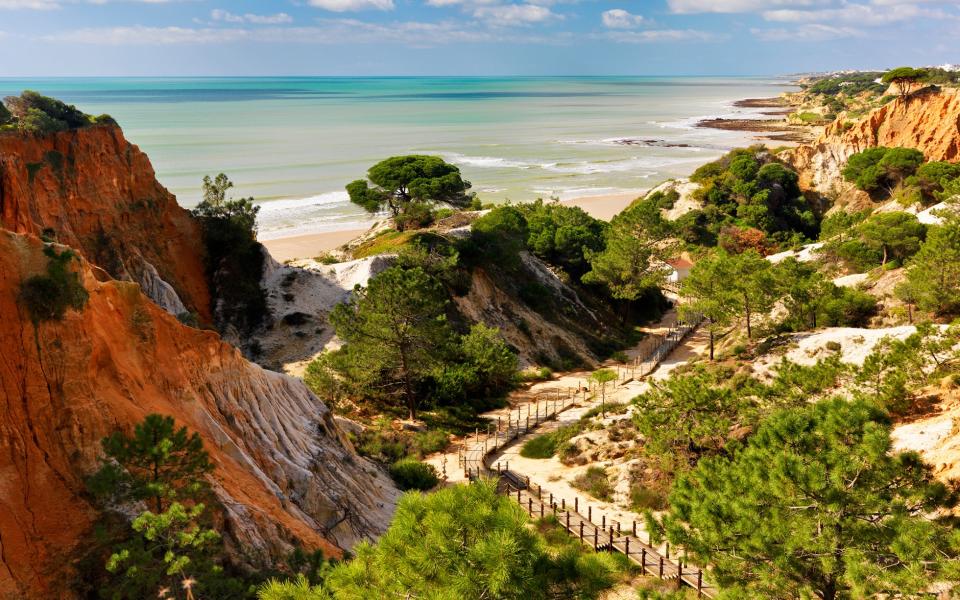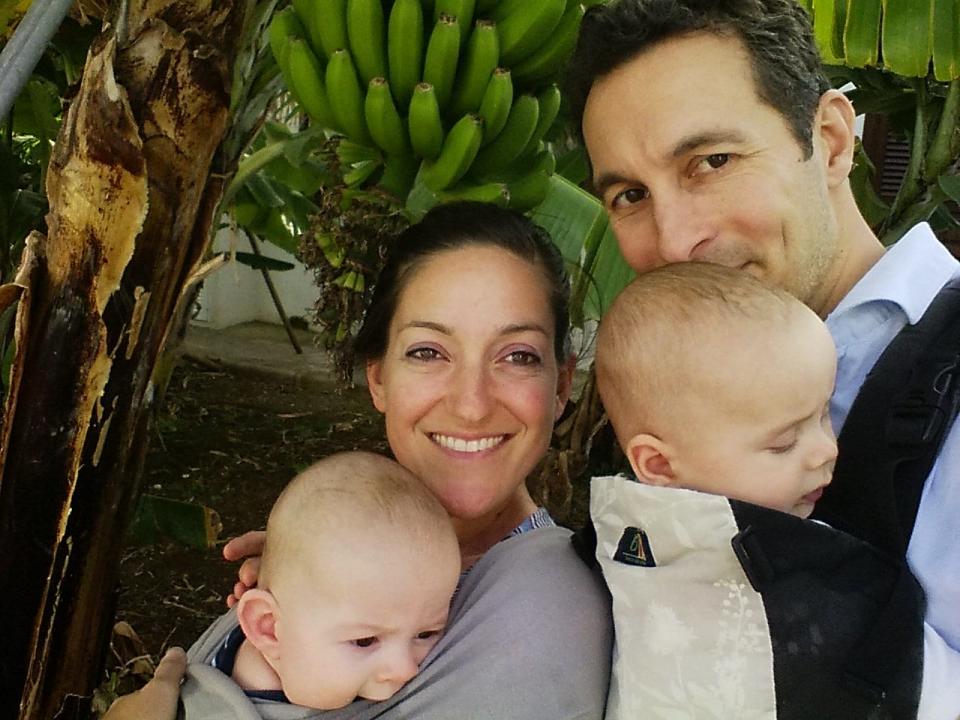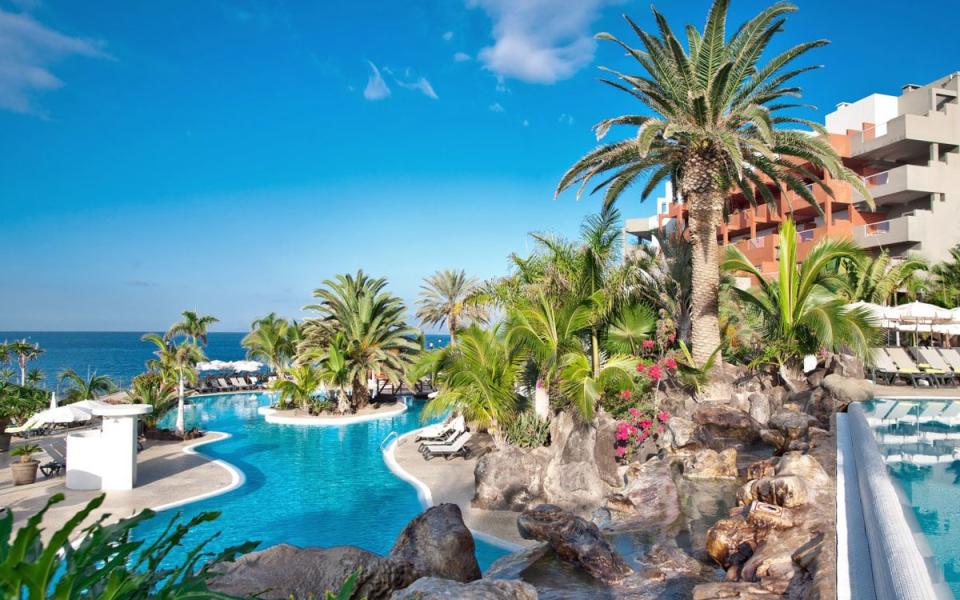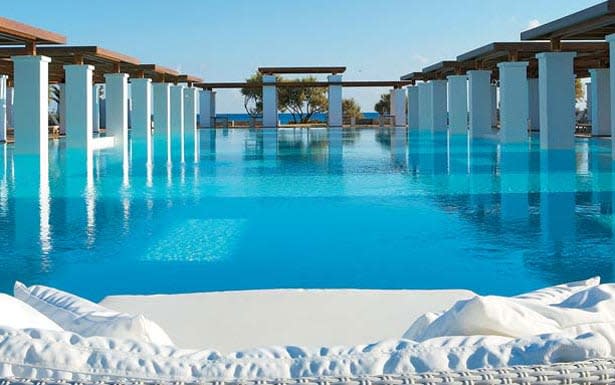Is this Europe’s most family-friendly island?

Friends recommended Tenerife as Europe’s most family-friendly island. There’s zero time difference. Flights from 20 British airports.
Plus average winter highs of 22C.
As a new parent, the past six months had been a maelstrom of smelly nappies and sleepless nights. I had double the trouble of a single baby: that’s right, twins.

Touching down in this, the most accessible of the Canary Islands, it already seemed that our friends were on to a good thing. The airport itself was a sun-blessed breeze: from baggage carousel to taxi, in five minutes flat. Twenty minutes later, the sun set on our palm-trimmed home for the first four nights of our week in the sun, the Roca Nivaria Gran Hotel. A tidy junior suite decked with children’s toys may be old hat to many holidaying parents, but it was a delightful novelty to us.
First mornings abroad used to mean a lie-in and a lazy buffet breakfast, with the alluring possibility of an intimate cuddle. No longer: along with a dozen other parents, we found ourselves on the early morning shuttle bus up Mount Teide which, at 12,198ft, is Spain’s highest peak. The cable car to its snow-capped summit is part of a raft of initiatives to tempt families of all ages from the coast into Tenerife’s spellbindingly wild interior: think guided mountain-bike descents, cookery courses and more than 600km of hiking trails.
The Mount Teide tour bus rumbled ever higher through banana plantations and cactus scrub, through woodland and cloud-tinged forest. Our tiny twins gazed out intently as Tenerife glinted from desert red to pine green, from bougainvillea purple to Atlantic blue.
It’s slightly galling that our children preferred the bus ride to the fancy German-built cable car that spans the final eight minutes to Teide’s mountaintop. But older kids on our tour appreciated that they were now sitting atop the world’s third largest volcano, about three times higher than Snowdon. We skirted the summit, twins in slings, by way of a black lava path. The vista is a seldom-seen Canarian vision. Three other Canary islands tempt in the distance like emeralds spilt on a carpet of blue. Volcanically green La Palma, beach-trimmed El Hierro and the hiking paradise of La Gomera are all a ferry hop away. Each one is stored in our holiday memory bank for another day.

Islands have long held a special place in my own holidaying heart. Summer breaks as a toddler were spent on the Isles of Scilly. The Scillonian ferry would cut through these same Atlantic seas to sand-ringed St Mary’s and subtropical Tresco. The islands got larger as my siblings and I grew. When we studied Greek history, our family holidayed in Spetses. Rented villas in Majorca later serviced our diverse teenage needs, from beaches to bike rides, from shopping for my older sister to Spanish lessons for us all. Corsica came next. An island large enough for young adults to escape from each other, yet ringed by beachy coves where the only other footsteps are those of a mountain goat.
There must be reasons why our family chose islands over mainlands, lovely though coastal Greece, Spain and France are. Psychologically, islands offer seclusion and solitude, plus the greater possibility of a sandy coast. There’s also that sense of arrival: disembarking in a new world separated by sea from both school and work. A lazier point might be that you can “do” your island’s must-sees safe in the knowledge that nothing else is visible on the horizon. Then one doesn’t feel so guilty about sitting by the pool.
18 idyllic islands you've probably never heard of
Lounging in a cabana in the Roca Nivaria gardens, I felt similarly shame-free. As Tenerife has founded its fortunes on child-friendly travel, high-end hotels tout unapologetic familial bliss. Beside my lounger lapped the family pool, attended by an in-pool swimming instructor who offered children tuition as parents took iPhone snaps. Beyond that is a toddlers’ pool.
But best of all was the Canarian weather. We were soaking up winter sun that tops 28C. Tenerife is reliably hot and stylish enough to have tempted my London-based sister, who has swapped family Christmases in Dubai with winter breaks in the island’s Abama Ritz-Carlton Resort.

For our final three days, we drove an hour from Tenerife’s sun-soaked south to the subtropical north. We journeyed past Los Gigantes, a grand canyon that plunges into the Atlantic from 1,500ft. Roadside lunches are €10 (£8.50) fiestas of seafood soup, Galician-style baked octopus and grilled sardines. Car hire is bargain basement on Tenerife, with deals from €20 per day. And nothing is more than 90 minutes away. Our final destination was a €75-a-night finca (farmhouse) near the Unesco-protected Anaga rainforest park, a Jurassic world of volcanic mountains, soaring eagles and monster flowers.
The most accessible of the trails inside the Anaga reserve was the child-friendly Sendero de los Sentidos, the “Footpath of the Senses”. Our escort was locally born Fátima (anagaatrapies.com, adults €25pp per three-hour hike, under-16s 30 per cent off), who has guided families on birdwatching and various cloud-topping hikes for 20 years.
Tenerife’s newest major family attraction occupied another day. Our twins were too little to ascend the treetop canopy connected by the Forestal Park climbing adventure. So, instead, my family watched as I glided, Ewok-style, from tree to tree, 100ft above, via rope bridges, wooden ledges, ladders and swings.
Our final day on the island was one of many firsts. The twins’ first meal: a tiny Tenerife banana. Their first nanny, who for €12 guarded them for a precious hour. Plus, their first sailing trip out to sea. The four of us boarded the catamaran Free Bird One (freebirdone.com, adults €41, ages six-11 €20.50) for a whale-watching tour. I spied a pod of 50 bottlenose dolphins, then a striped dolphin that danced a quicksilver necklace alongside the boat. The highlight was a vast colony of pilot whales that emerged alongside, as big as black London taxis. My sons’ first sea spray came courtesy of a calf, which spumed between the catamaran hulls. Curiously, the waters of Tenerife are so sublime that these whales don’t feel the need to migrate elsewhere. Clever creatures. It’s a feeling I understand too well.

Where to stay
Junior suites at the 5* Roca Nivaria Gran Hotel (read a full review and check availability) start at £253 per night b&b for a family of four, based on two adults and two children.
8 of the best baby-friendly holidays
Finca El Picacho (fincaelpicacho.com) is a kiddies’ dreamland: five rustic mini-villas (from €75 per night) set over a farm surrounded by vineyards and forest. Children have their own outdoor games hut, pétanque run, volleyball-court walking trail and Disney cartoon collection.



